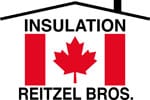Cellulose Fibre Insulation is an environmentally responsible choice for insulating. Its long lasting superior performance helps to keep your home cool in summer and warm in winter.
Maybe that is all you want or need to know, but here are the technical properties that can help make it easier to understand, why cellulose fibre insulation is your best choice.






